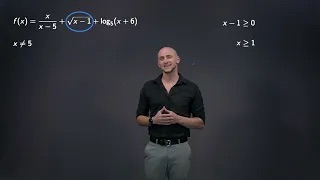
Domain of Combinations of Functions Video 1
Finding the domain of a function with a denominator, square root, and logarithm

Finding the domain of a function with a denominator, square root, and logarithm

Finding the domain of a function with a root and a logarithm in the denominator

Finding the domain of even and odd roots

Explaining the general properties of even and odd root functions

Explaining how to solve radical equations and then solving example problems

Solving equations with even roots and checking the solutions

Solving equations with multiple radicals

Finding the domains of functions

Finding the domains of expressions

Determining the domain of a three-dimensional vector function

Finding and sketching the domain of a function of two variables
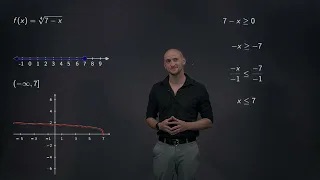
Finding the domain of functions with even and odd roots
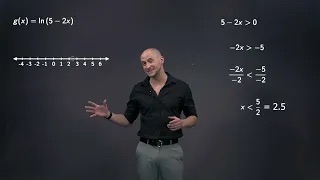
Finding the domain of a logarithmic function

Finding the domain of a function with a natural logarithm and denominator

Solving equations with odd radicals
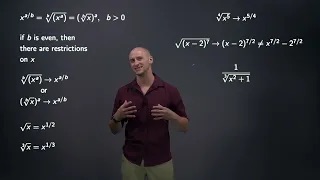
How to rewrite radical terms as power terms

Explaining how to solve equations with power and exponential terms

Explaining the basic properties of logarithmic functions

Expanding logarithmic expressions using logarithm rules

Condensing a logarithmic expression into a single logarithm

Explaining how to solve logarithmic equations

Solving logarithmic equations with a single logarithm term

Solving logarithmic equations with multiple logarithm terms

Solving logarithmic equations with multiple logarithm terms on both sides

Solving an equation that contains rational expressions

Solving an equation that contains rational expressions

Finding the inverse of a square root function and its domain

Determining the domain and range of a relation and if the relation is a function

Determining the domain and range of a relation and if the relation is a function

Determining the domain and range of a relation and if the relation is a function

Finding the domain of a piecewise function and evaluating it

Finding the domain of a function that is a fraction containing an exponential and root

Finding the domain of a function that is a fraction containing an exponential and root

Finding the domain of a function that is a fraction containing exponentials and a square root

Finding the domain, range, end behavior, and intercepts for a logarithmic function

Finding the domain of a function containing a logarithm, exponential, radical, and fraction

Finding the domain of a function containing several logarithms

Finding the domain of a function containing a logarithm, exponential, and fraction

Determining where a function with a fraction, square root, and logarithm is continuous

Determining where a piecewise function is continuous algebraically

Restricting the domain of a function so it is one-to-one and has an inverse

Determining algebraically the inverse of a function

Determining algebraically the inverse of a function

Determining algebraically the inverse of a function

Determining properties of an exponential function

Determining properties of an exponential function
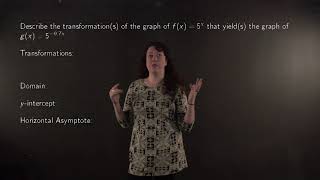
Determining properties of an exponential function

Identifying the graph of an exponential function

Determining properties of an exponential function

Determining the properties of a logarithmic function

Determining the graph of a logarithmic function

Determining the properties of a logarithmic function

Determining the graph of a logarithmic function

Solving an equation with an exponential function

Solving an equation with exponential functions by factoring

Using a graph to evaluate a function

Review of limits and derivatives of inverse trigonometric functions

Review of limits and derivatives of inverse trigonometric functions

Properties and derivatives of inverse trigonometric functions

Properties and derivatives of inverse trigonometric functions

Derivatives of exponential and logarithmic functions and the exponential model

Derivatives of exponential and logarithmic functions and the exponential model

Using derivatives to find properties of graphs
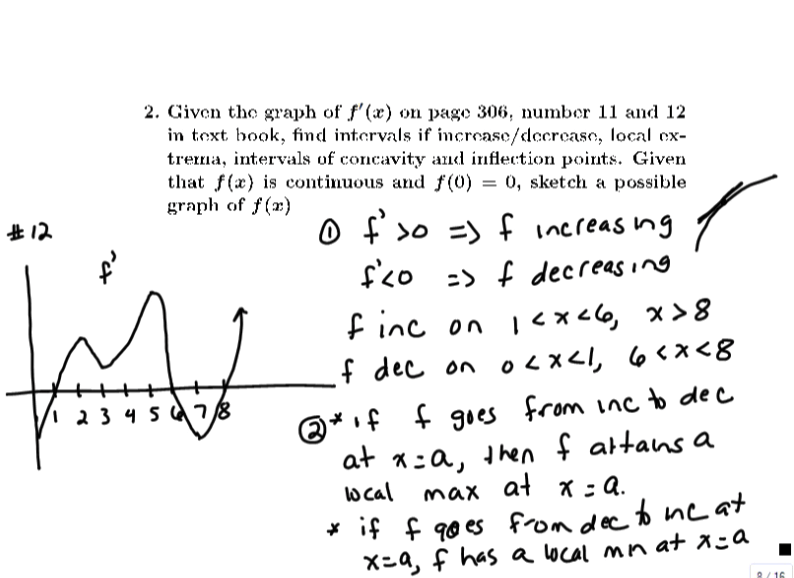
Using derivatives to find properties of graphs

Using Reimann sums and the Fundamental Theorem of Calculus

Using Riemann sums and the Fundamental Theorem of Calculus

Examples of integration by substitution

Review of limits and derivatives of inverse trigonometric functions

Review of limits and derivatives of inverse trigonometric functions

Properties and derivatives of inverse trigonometric functions

Properties and derivatives of inverse trigonometric functions

Derivatives of exponential and logarithmic functions and the exponential model

Using derivatives to find properties of graphs

Using derivatives to find properties of graphs

Using Reimann sums and the Fundamental Theorem of Calculus

Using Reimann sums and the Fundamental Theorem of Calculus

Examples of integration by substitution

Using integrals to solve work problems and find the average value

Finding and sketching the domain of a function of two variables

Finding the domain of a function with a square root in the denominator

Finding the domain of several rational functions

Finding the domain of a rational function

Explaining how to find any holes and vertical asymptotes of a rational function

Finding the domain of a rational function using factoring

Discussing properties of linear functions

Discussing the types of linear graphs including horizontal and vertical lines and their properties

Explaining the graph and properties for the parent function of quadratics
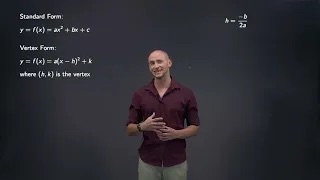
Discussing properties of quadratic functions including the vertex, domain, range, and end behavior

Properties of exponential growth and decay functions

Properties of the exponential function with base e

Solving equations with exponential terms

Solving equations with base e exponential terms

Explaining the terminology and rules of logarithms

Explaining how to multiply and divide rational expressions

Performing algebraic operations with rational expressions and simplifying the answer

Solving equations that contain rational expressions

Discussing parent functions of rational functions and their properties

Solving an equation with logarithmic functions

Solving an equation with logarithmic functions

Solving an equation with logarithmic functions

Solving an equation with logarithmic functions

Solving an equation with logarithmic functions

Determining if a graph represents a function and finding the domain and range

Find the domain of a function in interval notation with a fraction and logarithm

Finding the roots of a square root function

Finding the domain of a function with a fraction and radicals

Finding the domain of a function with a quadratic inside a square root

Finding the composition of two functions with exponentials and logarithms

Finding the composition of two functions with a square root and a fractional exponent

Finding the inverse of a linear function and its domain

Finding the inverse of a rational function and its domain

Finding the inverse of a rational function and its domain

Finding the domain and x-intercepts of a logarithmic function

Finding the domain and x-intercepts of a logarithmic function

Solving a logarithmic equation using properties of logarithms

Solving a logarithmic equation using properties of logarithms

Using a graph to find specific values of a function

Finding function values and expressions given the rule or equation of the function

Determining if functions are polynomials and finding their properties

Determining the end behavior, real zeros, domain, and y-intercept for a polynomial

Determining the end behavior, real zeros, domain, and y-intercept for a polynomial

Determining the end behavior, real zeros, domain, and y-intercept for a polynomial

Determining the end behavior, real zeros, domain, and y-intercept for a polynomial

Determining the end behavior, real zeros, domain, and y-intercept for a polynomial
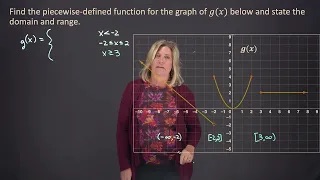
Finding the piecewise-defined function for a given graph along with its domain and range

Finding the properties of an exponential function including domain, range, end behavior, and intercepts

Finding the properties of an exponential function including domain, range, end behavior, and intercepts

Finding the properties of an exponential function including domain, range, end behavior, and intercepts

Using properties of logarithms to determine whether a statement is true or false

Using properties of logarithms to determine whether a statement is true or false

Solving an equation with exponential functions

Solving an equation with a logarithmic function

Solving an equation with several logarithmic functions

Solving an equation an exponential function

Evaluating a logarithm inside an exponential function

Expressing a combination of logarithms as a single logarithm

Finding the domain, intercepts, asymptotes, and holes of a rational function

Finding the domain, intercepts, asymptotes, and holes of a rational function

Finding the domain, intercepts, asymptotes, and holes of a rational function

Finding where a function with a fraction and cube root is continuous

Using the limit definition to find the derivative of a square root function

Finding the derivative a function with a power, exponential, and logarithm

Finding a derivative of a function with a logarithm using the Product Rule

Finding the derivative of a function with a square root and exponential using the Product Rule

Finding a derivative using both the Product and Quotient Rule

Using the Generalized Exponential Rule to find the derivative of a function

Using logarithm properties to simplify before using the Chain Rule to find a derivative

Using logarithm properties to simplify before using the Generalized Logarithm Rule to find a derivative

Using the alternate form of the Chain Rule to find the derivative

Finding the derivative of a function that requires logarithmic differentiation

Using implicit differentiation to find the derivative of a function

Finding the intervals where a function is increasing/decreasing and the local extrema

Finding intervals of increase/decrease and the local extema for revenue from a word problem

Finding the intervals of concavity and inflection points for a function with exponentials

Determining the intervals of concavity and inflection points from the graph of a function

Using the second derivative test to find local extrema for a function

Finding the absolute maximum and minimum of a rational function on two closed intervals

Finding the absolute maximum and absolute minimum of a rational function on two closed intervals

Finding the selling price of trucks to maximize profit given the cost and price-demand functions

Finding the dimensions of the box with the largest volume given the amount of material to make the box

Finding the minimum cost of a box given the volume and cost of materials

Finding the antiderivative of a function

Solving an indefinite integral by first simplifying the fraction

Solving an indefinite integral with a natural logarithm using u-substitution

Solving an indefinite integral with a cube root in the denominator using u-substitution

Using u-substitution in an indefinite integral to find a function from its derivative and a given vaue

Using geometric formulas for circles, triangles, and rectangles to find the exact area under a curve

Using derivatives to find the velocity and acceleration functions from the position function
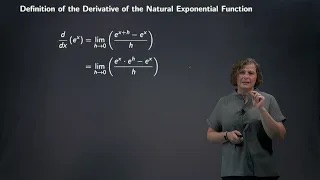
Explaining the formulas for the derivatives of exponential functions

Calculating a derivative of a quotient with an exponential function

Explaining the definition of logarithmic scale and double-log plots
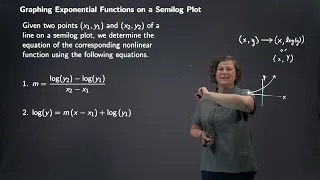
Explaining the logarithmic scale and a semilog plot

Using logarithms to transform a power function into a linear function

Writing a non-linear function for the graph containing two points on a double-log plot

Using logarithms to transform an exponential function to a linear function

Writing a non-linear function to represent the line graphed on a semilog plot

Using the second derivative to find the maximum rate of change in a word problem

Simplifying an expression with radicals

Rationalizing the denominator of a fraction with square roots

Rationalizing the denominator of a fraction with square roots

Calculating the difference quotient for function with a square root

Determining if an equation represents a function

Evaluating a piecewise function
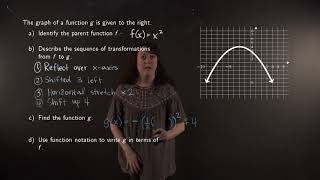
Identifying the parent function and transformations of a function

Identifying the parent function and transformations of a function

Finding properties of a polynomial including zeros and end behavior
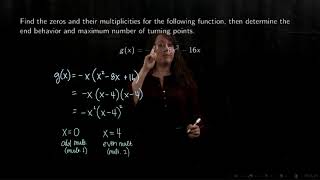
Finding properties of a polynomial including zeros and end behavior

Finding properties of a polynomial including zeros and end behavior

Using properties of a polynomial to find its graph

Determining the properties of a rational function and graphing it

Determining the properties of a rational function and graphing it

Finding combinations of functions and their domains

Graphically verifying if two functions are inverses

Simplifying logarithmic expressions using the properties of logarithms

Using the properties of logarithms to expand a logarithmic expression

Using the properties of logarithms to expand a logarithmic expression

Using the properties of logarithms to condense the expression as a single logarithm

Using the properties of logarithms to condense the expression as a single logarithm

Using the formula to change the base of a logarithm

Using the formula to change the base of a logarithm

Solving an equation with an exponential function

Solving an equation with an exponential function

Modeling a population size with an exponential function

Determining if a function is even or odd

Cartesian equations and parametric equations of curves

Derivatives and vectors with some physics applications

Derivatives of exponential functions and the exponential model

Reviewing the chain rule and the derivatives and limits of trigonometric functions

Related rates problems, differentials, linear and quadratic approximations

Mean Value Theorem and using derivatives to find the shape of curves

Continuity of Functions and the Intermediate Value Theorem
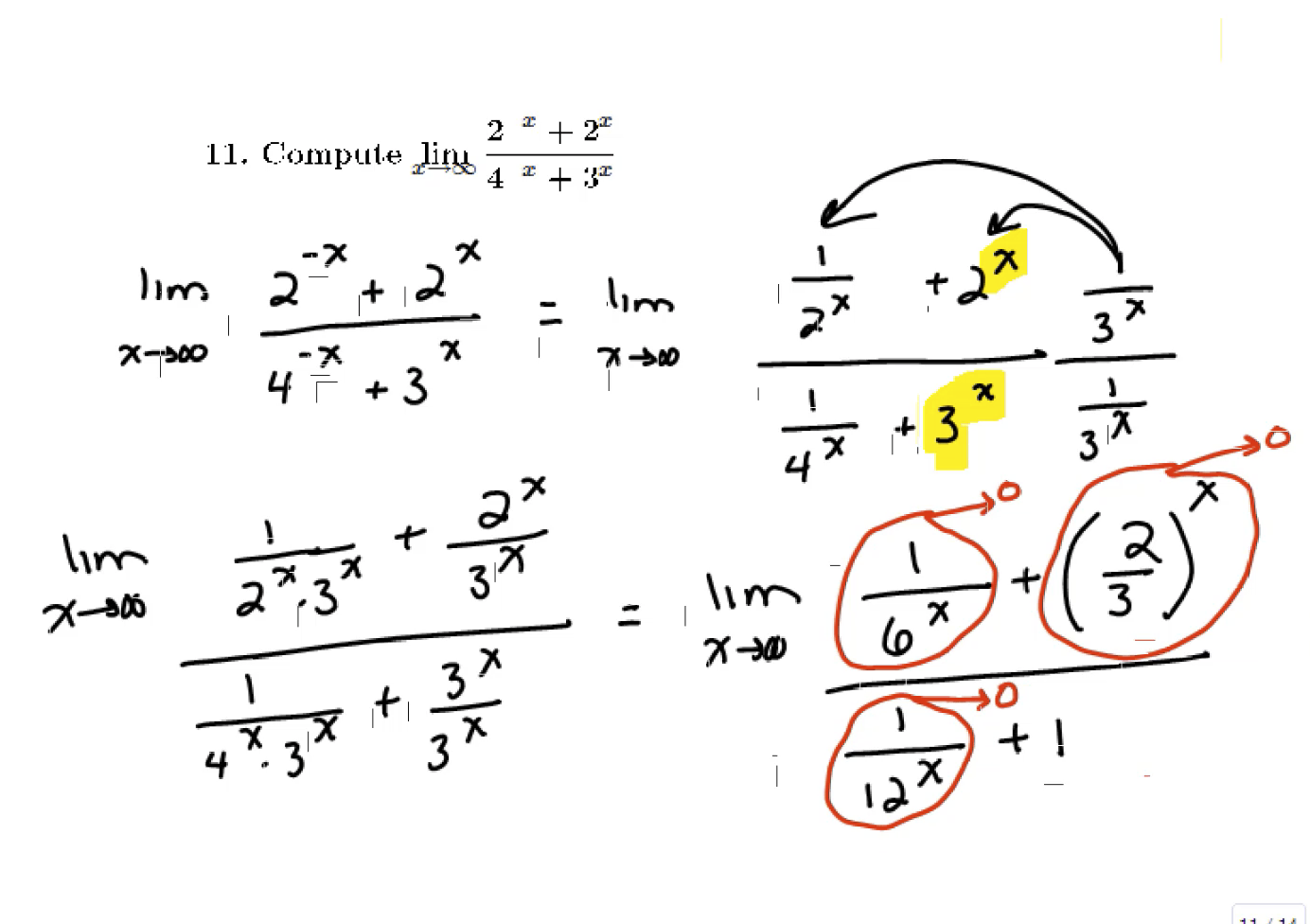
Approximation and Newton's Method, and limits and derivatives of exponential functions

Approximation and Newton's Method, and limits and derivatives of exponential functions

Derivatives and vectors with some physics applications

Derivatives and vectors with some physics applications

Using L'Hospital's Rule to solve limits

Riemann sums, including approximating areas under curves.

Finding the derivative of a function using the limit definition

Finding the derivative of a function containing a logarithmic function

Finding the derivatives of functions containing logarithms

Finding the derivative of a function containing a logarithms

Finding the equation of a tangent line to a function containing a logarithm

Using logarithmic differentiation to find the derivative of a function

Using logarithmic differentiation to find the derivative of a function

Using logarithmic differentiation to find the derivative of a function

Using the Product and Chain Rules to differentiate functions with logarithms

Differentiating functions with logarithmic and inverse trigonometric functions

Using the chain rule to find a derivative

Using logarithmic differentiation to find the derivative of a function

Using logarithmic differentiation to find the derivative of a function

Using a linear approximation to approximate the value of a function

Finding a number that satisfies the conclusion of the Mean Value Theorem on an interval

Evaluating a limit using L'Hospital's Rule

Evaluating a limit with an indeterminate power using L'Hospital's Rule

Evaluating a limit with an indeterminant power using L'Hospital's Rule

Antidifferentiating twice to find a function from its second derivative

Antidifferentiating to find a function from its derivative

Antidifferentiating twice to find a function from its second derivative

Antidifferentiating twice to find a function from its second derivative

Using antidifferentiation to find the height of a cliff from the impact speed of a dropped stone

Evaluating a limit using logarithm properties

Evaluating a limit using L'Hospital's Rule

Evaluating a limit with an indeterminant power using L'Hospital's Rule

Evaluating a limit at infinity by combining logarithms

Finding a derivative using the Chain Rule and Product Rule

Finding a derivative using the Quotient Rule

Using logarithmic differentiation to find the derivative of a function

Using L'Hospital's Rule to solve a limit with an indeterminant product

Using L'Hospital's Rule to solve a limit with an indeterminant difference

Evaluating an indefinite integral by simplifying a fraction to powers of x

Evaluating a definite integral by first simplifying the integrand

Evaluating a definite integral with an exponential and sine function

Using u-substitution to evaluate an indefinite integral

Review of work and average value

Reviewing u-Substitution

Review of estimating the sum of a series and the remainder

Review of using tests to determine if a series is absolutely convergent, convergent, and divergent

Review of finding the radius and interval of convergence for a power series

Review of power series properties and writing functions as power series

Review of Taylor and Maclaurin Series and their properties

Review of Taylor Polynomials and Taylor's Inequality

Review of using tests to determine if a series is absolutely convergent, convergent, and divergent

Finding a Taylor Polynomial for a function

Finding power series representations for functions and the radius and interval of convergence of the power series

Integrating a rational function using u-substitution

Integrating a rational function using u-substitution

Integrating a function with a square root using u-substitution

Finding the area of a region enclosed by two curves

Finding the area of a region bounded by curves

Finding the volume of a solid of revolution using the washer method

Finding the volume of a solid of revolution using the washer method

Finding the volume of a solid of revolution using cylindrical shells

Finding the volume of a solid of revolution using cylindrical shells

Evaluating an integral using integration by parts

Evaluating an integral using integration by parts

Evaluating an integral using integration by parts

Evaluating an integral using integration by parts

Using the comparison test to determine if an improper integral converges or diverges

Using the comparison test to determine if an improper integral converges or diverges

Determining if a sequence converges or diverges

Determining if a sequence is increasing, decreasing, or not monotonic and if it is bounded

Using the comparison test to determine if a series converges or diverges

Using the comparison test to determine if a series converges or diverges

Finding a power series representation for a function

Determining if a series is absolutely convergent, conditionally convergent, or divergent.

Finding the interval and radius of convergence for a power series

Converting parametric equations into a Cartesian equation and graphing

Solving an indefinite integral with a natural logarithm using integration by parts

Solving a definite integral with a natural logarithm using integration by parts

Using u-substitution to evaluate a definite integral with a natural logarithm

Solving an improper integral where the upper limit of integration is infinity

Solving an improper integral where the upper limit of integration is infinity

Solving an improper integral where the upper limit of integration is infinity

Cartesian equations and parametric equations of curves

Derivatives and vectors with some physics applications

Derivatives and vectors with some physics applications
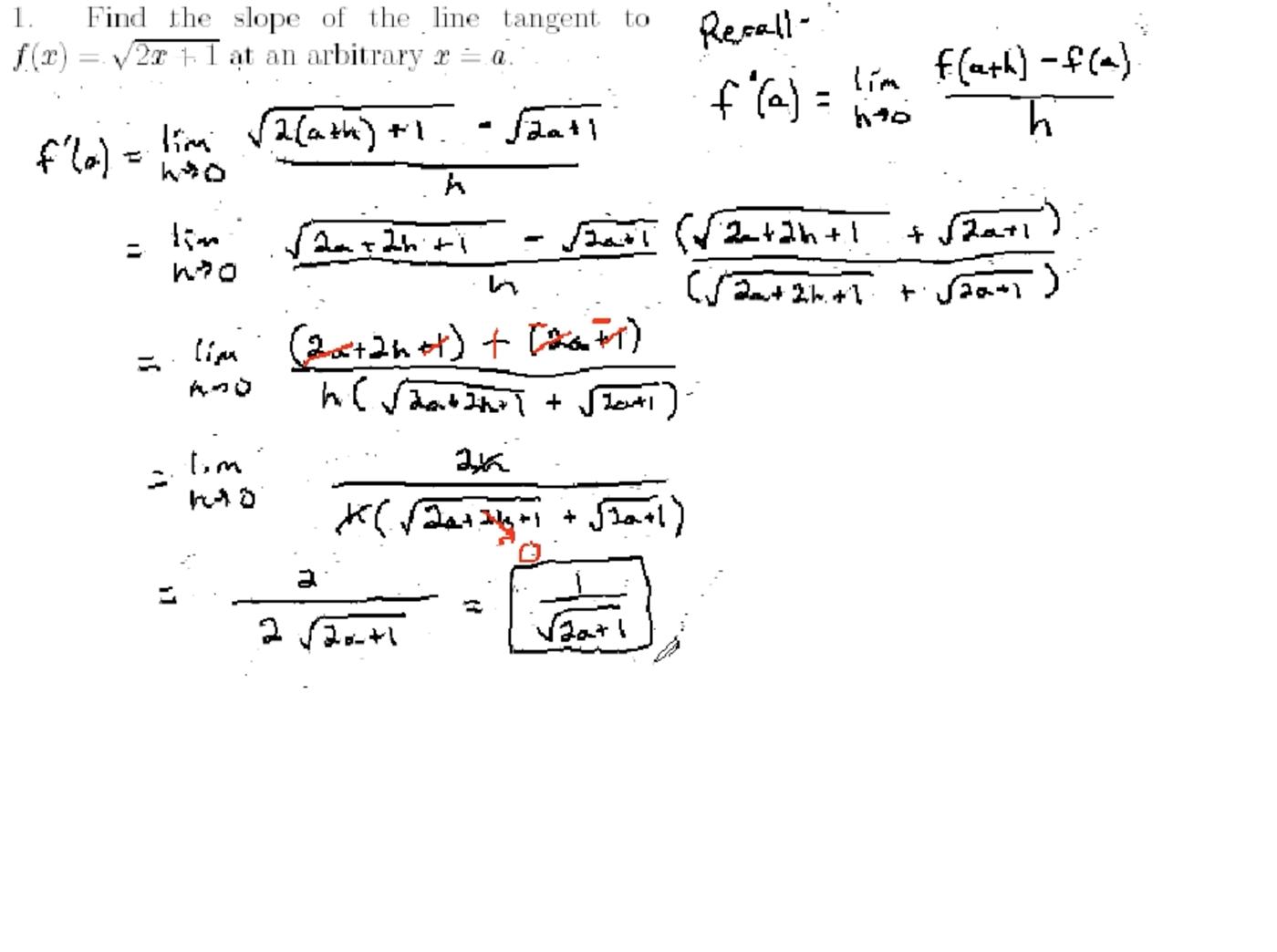
Using the limit definition to find derivatives of functions and vector functions

Derivatives of exponential functions and the exponential model

Reviewing the chain rule and the derivatives and limits of trigonometric functions

Related rates problems, differentials, linear and quadratic approximations

Mean Value Theorem and using derivatives to find the shape of curves

Properties of inverse trig functions and the derivative of arctangent

Proving a property of scalar multiplication for limits using the epsilon-delta definition and using the Squeeze Theorem for Limits.

Continuity of Functions and the Intermediate Value Theorem

Approximation and Newton's Method, and limits and derivatives of exponential functions

Using the limit definition to find derivatives of functions and vector functions

Using the limit definition to find derivatives of functions and vector functions

Approximation and Newton's Method, and limits and derivatives of exponential functions

Derivatives and vectors with some physics applications

Properties of inverse trig functions and the derivative of arctangent

Proving facts about logarithms and exponentials including the derivative of an exponential with an arbitrary base

Proving the derivative of ln(x) and the power and product rules using logarithmic differentiation

Proving L'Hospital's Rule and using it to evaluate limits

Using L'Hospital's Rule to solve limits

Riemann sums, including approximating areas under curves.

The definition and properties of definite integrals

Using u substitution to evaluate integrals and prove facts about logarithms and integrals and

Review of work and average value

Reviewing u-Substitution

Review of estimating the sum of a series and the remainder

Review of using tests to determine if a series is absolutely convergent, convergent, and divergent

Review of finding the radius and interval of convergence for a power series

Review of power series properties and writing functions as power series

Review of Taylor and Maclaurin Series and their properties

Review of Taylor Polynomials and Taylor's Inequality

Review of using tests to determine if a series is absolutely convergent, convergent, and divergent

Determining properties of sequences

Finding a Taylor Polynomial for a function

Finding power series representations for functions and the radius and interval of convergence of the power series

Finding a partial fraction decomposition and integrating using partial fractions

Finding a vector equation for the tangent line to a three-dimensional vector function

Finding the position vector function given the velocity and an initial position

Finding the partial derivatives of a function of two variables

Performing basic numerical calculations in Python

Defining variables in Python and using the variables in equations

Evaluating a double integral over a given region by splitting it into two double integrals

Explaining the main three forms for linear equations

Discussing how to write the equation of a line through two given points

Writing a linear equation of profit from a business word problem

Solving a linear equation algebraically and showing how this relates to the graph

Solving a linear equation algebraically

Solving a linear equation algebraically and showing how this relates to the graph

Explaining the format and possible solutions for a system of two linear equations

Solving a system of linear equations with two variables

Solving a system of two linear equations with two variables using the elimination method

Solving a system of two linear equations using a TI-84 calculator

Solving a system of two linear equations using a TI-84 calculator

Solving a system of two linear equations using a TI-84 calculator

Explaining the standard form for a quadratic equation and the possible number of solutions

Solving quadratic equations with the difference of two squares formula
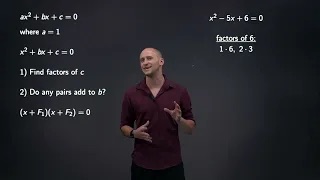
Solving quadratic equations by factoring

Solving a quadratic equation by factoring

Solving a quadratic equation by factoring

Solving quadratic equations with the quadratic formula and discussing the number of possible solutions

Explaining when a quadratic equation does not have a real solution

Simplifying power and exponential expressions using properties of exponents

Simplifying power and exponential expressions using properties of exponents

Simplifying power and exponential expressions using properties of exponents

Simplifying an expression with both power and exponential functions using properties of exponents
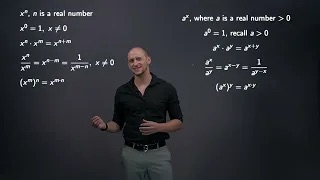
Properties of exponents applied to power and exponential expressions

Properties of multiplying and simplifying power and exponential expressions

Properties of exponents applied to power and exponential expressions

Finding horizontal asymptotes for rational functions
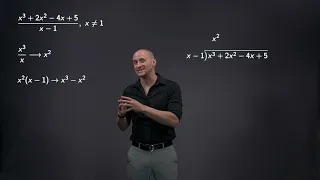
Explaining how to do polynomial long division

Finding horizontal asymptotes for rational functions

Determining the end behavior and horizontal asymptotes for rational functions

Explaining basic algebraic operations for fractions

How to simplify rational expressions

Adding and subtracting rational expressions by finding a common denominator

Finding the limit of a sequence using logarithm properties

Finding the limit of a sequence

Evaluating and then finding and sketching the domain of a function of two variables

Finding and sketching the domain of a function of two variables

Sketching the level curves for a function of two variables

Sketching the level curves for a function of two variables

Finding the nth Taylor polynomial of the natural log function centered at 1

Explaining the format and possible solutions for a system of two linear equations

Explaining the Pythagorean Theorem and using it to find a missing side in a right triangle

Writing the domain of functions with radicals in interval notation

Solving a rational equation and checking the solutions

Solving equations with exponentials and logarithms

Solving equations with exponentials and logarithms

test

Finding the properties of a quadratic function such as the vertex, axis of symmetry, intercepts, etc.

Finding the domain, intercepts, holes, and vertical asymptotes for a rational function

Finding the domain of a piecewise-defined function and evaluating it for given x-values

Finding properties of a polynomial function such as the degree, end behavior, y-intercept, etc.

Finding properties of a polynomial function such as the degree, end behavior, y-intercept, etc.

Stating the domain in interval notation of a function with radicals, fractions, and exponentials

Using properties of logarithms to write an expression as a single logarithm

Writing logarithmic equations in exponential form

Solving equations with exponentials and logarithms

Finding the roots of a function with an absolute value

Using the quadratic formula to find the roots of a function

Finding the roots of a cubic polynomial

Finding the domain of a rational function

Finding the domain of a rational function

Finding the composition of two functions with a cube root and a fractional exponent

Finding the composition of two functions

Finding the composition of a rational function and a quadratic

Solving a equation with an exponential function

Solving an equation with two exponential functions with different bases

Solving an equation with exponential functions by factoring

Solving a equation with exponential functions by factoring

Expanding a logarithmic expression using logarithm properties

Condensing logarithmic expressions into a single logarithm

Finding the exact value of logarithms using logarithmic properties

Finding the vertical asymptote of a logarithmic function

Finding the vertical asymptote of a logarithmic function